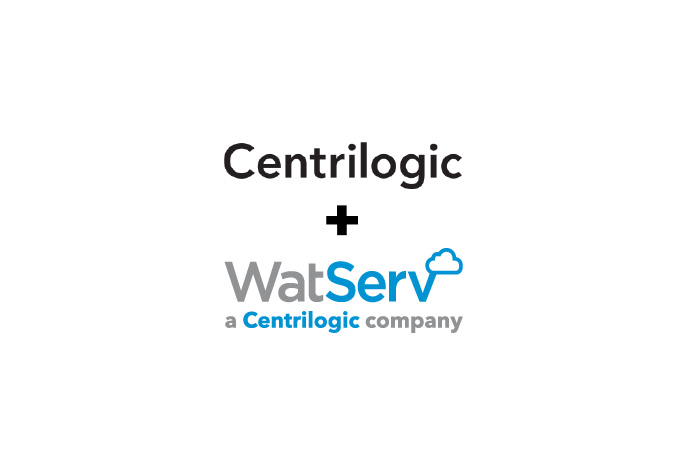What to Consider When Migrating to the Cloud
By WatServ
July 29, 2022
Considering migrating to the public cloud? If so, you’re not alone. Cloud migration is continuing to surge at a rapid rate, and by 2025, it is estimated that more than half of IT spending will be invested in cloud infrastructures.
Cloud adoption has become common among organizations large and small because it creates new opportunities for spurred innovation, improved security and reduced costs. In the wake of the COVID-19 pandemic, it’s also become essential to enable secure remote/hybrid work.
In this article, we’ll cover what public cloud migration is, and provide seven key cloud migration considerations to take into account when planning a migration of your organization’s IT estate to the cloud.

What is Cloud Migration?
Cloud migration is the process of migrating a company’s data, applications, and other IT resources to remote services hosted on the internet.
A lot of companies choose to migrate to a public cloud like Microsoft Azure, Amazon Web Services (AWS) or Google Cloud Platform (GCP) in order to achieve benefits such as reduced costs, mitigated risks, improved resilience, fast-tracked innovation and increased scalability.
Before you begin your cloud migration journey, there are many things to consider. Here are our top seven.
7 Key Cloud Migration Considerations
1. Total Cost
Before investing in a cloud migration strategy, assessing affordability of both the migration process, and licenses and maintenance of the cloud solution, is important to ensure the smoothest transition and ongoing business operations.
Before landing on a public cloud provider, become familiar with pricing models (such as pay-as-you-go or reserved instances) across the board. Assess your internal resources and look at long-term feasibility and organization needs. It’s also helpful to understand the accounting options available. For instance, will your finance team consider cloud a capital expenditure (CapEx) or an operating expense (OpEx)?
All of these factors should be considered in the total cost of cloud migration.
2. Agility Needs
How much scalability does your organization need? Is it essential for you to be able to shift as your company expands or contracts? Does your organization have a variable or static amount of users, and is geography an issue?
Luckily, cloud providers are often as agile as your company. However, making a plan for agility and scalability is one of the first considerations when you embark on a cloud journey.
3. Cloud Scenario
There are generally three types of cloud options to choose from: public, private or hybrid cloud services. Which cloud scenario you choose depends on the levels of security, regulatory requirements and scalability that your organization requires.
To provide a quick summary:
Public cloud: is a computing service that is offered by third-party companies, such as Microsoft Azure or AWS. These services are shared with the cloud provider’s other clients and therefore, the costs are generally lower and built-in security features higher.
Private cloud: is a cloud computing service that is used by only your organization. This includes all services and infrastructure existing on a private network, and all the resources are dedicated solely to your organization. This cloud type can be more expensive than private cloud options. Organizations such as financial companies usually opt for private clouds, but sometimes a hybrid cloud solution is optimal.
Hybrid cloud: is a scenario that combines both private and public cloud services. By using on-premise data centers with a public cloud service, this allows organizational assets to communicate between the different cloud services.
4. Cloud Provider
Not all cloud providers are the same, and it’s important to do research before landing on a cloud provider. Examine and analyze each provider based on their technology, compatibility with your needs and workflows, international regulations and governing policies.
The top three public cloud providers are currently AWS, Microsoft Azure and GCP. Other public cloud providers include IBM Cloud (Kyndryl), Oracle Cloud and Alibaba Cloud.
5. Security
In many cases, cloud migration is more secure than using on-premises infrastructure. Because most cloud providers offer 24/7 monitoring and maintenance, there is a level of security embedded within the systems.
While there are always risks to storing data in the cloud, public cloud services are particularly safe primarily because the security resources required for constantly testing, monitoring and updating in order to maintain security is impractical for a single organization to shoulder, and not cost effective.
When investigating which cloud provider is best for your organization, investigate their security services. How do they support disaster recovery? Do they offer 24/7 support? These considerations can save you in the long run.
6. Cloud Migration Strategy
Another consideration is which cloud migration strategy would be best for your organization. There are three common cloud migration strategies:
Rehosting: Sometimes called “lift and shift,” this involves changing applications’ infrastructure and redeploying it in a different hardware environment. It is essentially taking your existing applications and moving them to the cloud.
Replatforming: This is when existing applications are moved to the cloud with your existing technology modernized. Part of the application stack is changed, but the core architecture of the application itself remains the same.
Repurchasing: This is where existing legacy applications are replaced with entirely upgraded solutions. This process takes considerable planning.
7. Migration Architecture
One of the final things to consider when migrating to the cloud is building a robust migration infrastructure. Because migrating an entire organization’s assets and data to the cloud is very complex and technical, regardless of cloud solution type – private, public or hybrid – making sure you’ve got an expert cloud migration architect at the helm creating this strategy and making decisions is critical.
This is essential in any successful cloud migration strategy and something that may not be feasible to do in-house. This is why a lot of organizations partner with cloud migration experts to ensure a smooth and secure migration.
The Future is Cloud
Moving towards cloud migration is a challenging task. However, when it’s done correctly, it can position your organization ahead of the competition, and you will reap the benefits for years to come.
To learn more about the benefits of cloud migration, visit our guide: Top Benefits of Public Cloud in 2022.
About
WatServ is an IT solutions provider that helps organizations digitally transform through cloud technologies and managed services.
Serving clients as a trusted advisor since 2006, WatServ provides experience-tested, strategic solutions across all stages of the digital transformation journey. Clients choose WatServ to migrate infrastructure and applications to the cloud, secure critical data, implement disaster recovery, deploy virtual desktop, enable data-readiness for productivity solutions and manage IT environments.
Our clients span a broad range of industries, and we’re a global supplier of IT services for many Brookfield Portfolio Companies. To help our mid-size clients, we provide scalable offerings that simplify cloud adoption and drive business optimization. For enterprise clients, we co-create cloud solutions that enable stability and efficiency for complex IT tools and processes.
With more than 15 years of experience, WatServ has a track record of delivering quantifiable business results and a superior client experience. Ranked as one of Canada’s Top 100 Solution Providers for the last three years in a row, WatServ is always on.

